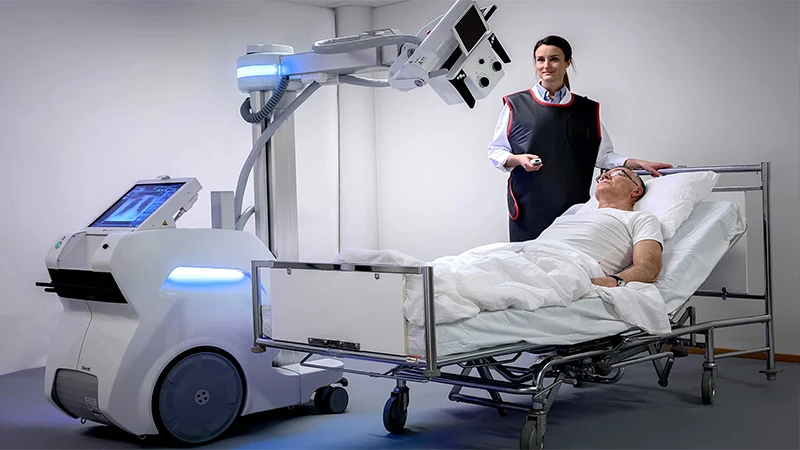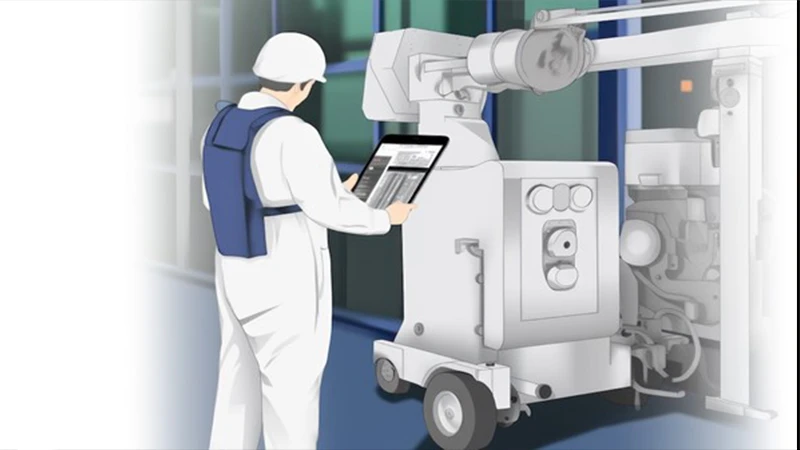A Technologist's Guide to Portable X-ray
While most radiography is performed in a dedicated room within the radiology department, some patients are too critically ill or immobile to be transported. For these cases, imaging must come to the patient. This is the world of portable radiography, a challenging but essential service that relies on mobile X-ray machines to provide diagnostic imaging at the patient's bedside.
When is Portable Radiography Used?
Portable X-rays are a lifeline in many areas of the hospital.
- Intensive Care Units (ICUs): The most common use is for daily morning chest X-rays on critically ill patients to check for line and tube placements (like endotracheal tubes and central lines) and to monitor for conditions like pneumonia or fluid in the lungs.
- Emergency Department: For trauma patients who are too unstable to move to the main department.
- Operating Rooms: To provide surgeons with real-time images during orthopedic procedures to check hardware placement.
- Patient Rooms: For patients who are in isolation or are physically unable to leave their bed.

The Unique Challenges
Performing an X-ray at the bedside is far more challenging than in the controlled environment of an imaging suite.
- Patient Positioning: The ideal, upright PA chest X-ray is rarely possible. Most portable exams are AP (anteroposterior) with the patient in a semi-upright or supine (lying down) position. The technologist must be creative and skilled in manipulating the patient and the equipment to get a diagnostic image without causing discomfort or further injury.
- Technique Adjustment: Factors like patient size, the presence of medical equipment, and variable distances mean the technologist must manually adjust the exposure technique (kVp and mAs) for every shot.
- Image Quality: It is more difficult to achieve the same level of image quality as a departmental exam. Issues like magnification of the heart on an AP chest X-ray are unavoidable, and radiologists must be aware of these technical limitations when interpreting the images.
Radiation Safety in an Uncontrolled Environment
Radiation safety is paramount during portable radiography. Unlike a lead-lined room, a standard hospital room offers no shielding. The technologist is responsible for the safety of everyone in the vicinity.
- Communication: Before making an exposure, the technologist must loudly announce "X-RAY!" to alert other staff, visitors, and patients in the area.
- Distance: The technologist must stand at the maximum length of the exposure cord (at least 6 feet or 2 meters away) from the X-ray tube.
- Shielding: The technologist should wear a lead apron and provide one to anyone who must remain in the room (like a nurse assisting with the patient). Whenever possible, other patients in multi-bed rooms should also be shielded.

Conclusion: Adaptability and Skill
Portable radiography is a testament to the skill, adaptability, and critical thinking of a radiologic technologist. It requires a deep understanding of radiographic principles and a strong commitment to patient care and safety. By bringing essential diagnostic imaging directly to the bedside of the most vulnerable patients, portable radiography plays an indispensable role in the hospital ecosystem.


Comments